The Partnership invited Steven Schauer to write a guest article providing lessons learned from the San Antonio River Improvements Project. Schauer, who now resides in Seattle, served as the director of external communications for the San Antonio River Authority during the construction and implementation of this innovative project that garnered global recognition and won the 2017 International Riverprize.
Restoring the Spirit Waters
If you are at all familiar with the San Antonio River, chances are your thoughts go to the San Antonio River Walk with its dining, shopping, and cultural experiences all intimately situated along the river as it flows through the heart of San Antonio, Texas. This would be understandable since the River Walk is the top tourist destination in Texas and is often listed as a top tourist destination in the United States.
You may not, however, be as familiar with the San Antonio River Improvements Project, a $384 million effort that constructed flood mitigation, ecosystem restoration, and cultural, recreational, and artistic amenities along 13 miles of the San Antonio River, both upstream and downstream of the existing historic San Antonio River Walk. These river improvements included constructing one of the nation’s largest urban ecosystem restoration projects, known as the Mission Reach.
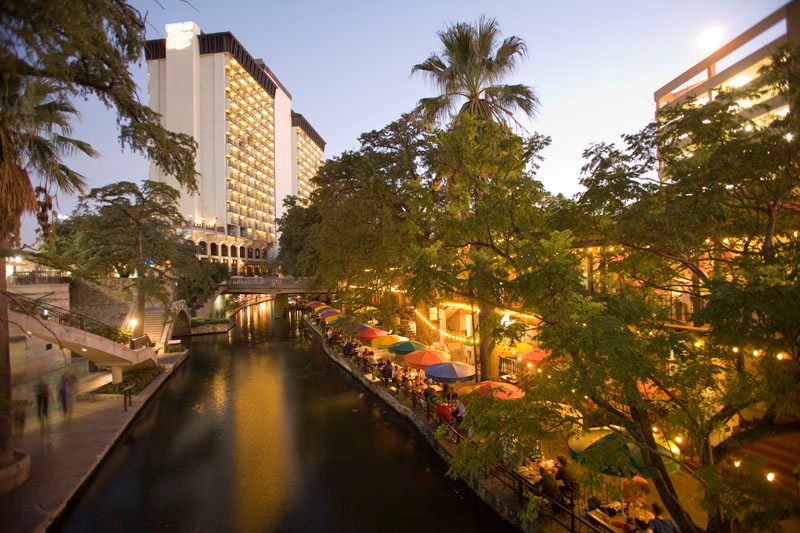
Spirit Waters and urban flooding
Before getting into the story of the ecosystem restoration project and the lessons learned, it makes sense to provide a little history to help explain why the river was in need of restoration.
Archeological evidence suggests humans have lived along the San Antonio River for over 12,000 years. The area of present-day San Antonio was home to several bands of Indigenous peoples known as the Payaya who were affiliated with the Coahuiltecan dialect. To these First Peoples, the San Antonio area was known as Yanaguana or “Land of the Spirit Waters.” This area included the land where their villages were located, the river, its tributaries, and a sacred spring known today as the Blue Hole. It was the Spanish, upon their arrival to the area in 1691, who named the river San Antonio de Padua, in honor of the feast day of St. Anthony of Padua, and it is this name, the San Antonio River, that is still in use today.
On a personal note, after giving over 500 presentations and interviews about the river during my 15-year career at the San Antonio River Authority, kayaking nearly the entirety of the 240-mile river, and overseeing the production of close to 200 videos and four documentaries about various aspects of the watershed, including a short film about the river and a feature length movie about the kayaking trip, I have come to intellectually know the river by its given Spanish name, but in my heart, I have come to appreciate and respect why the Payaya referred to it as Spirit Waters.
In the centuries following Spanish colonization, the City of San Antonio grew up along the banks of the San Antonio River. In the early twentieth century, the large urban city experienced a series of floods culminating in a deadly flood in 1921. The city began taking significant steps after that devastating event to straighten and deepen the river as a means to control flooding through downtown. In the late 1930s, a beautification project took place that included additional flood control measures – this was the origin of the San Antonio River Walk.
The majority of the channelization, while very functional for flood management, essentially turned the river and many of its tributaries into drainage ditches by removing nearly all native vegetation, healthy habitat function, aesthetic value, and recreational use.
Another deadly flood happened in 1946, which prompted congressional action in 1954 authorizing the U.S. Army Corps of Engineers (Corps) to channelize 31 miles of the San Antonio River and its tributaries. In the 1990s, the Corps added two large flood tunnels diverting floodwater under downtown San Antonio, thus completing an aggressive, multi-pronged 80-year effort to tame the dangerous, flashflood-prone San Antonio River.
The majority of the channelization, while very functional for flood management, essentially turned the river and many of its tributaries into drainage ditches by removing nearly all native vegetation, healthy habitat function, aesthetic value, and recreational use.
The local neighborhoods where most of the channelization work took place were (and still are) primarily comprised of lower socio-economic communities that were (and still are) predominately minority, typically Hispanic. While these local neighborhoods did receive some economic benefits in the form of flood mitigation, the primary beneficiary of the 80 years of flood management work was the more affluent downtown San Antonio area.
This situation is not unique to San Antonio. Across the nation, indeed across the globe, it is clear that throughout the twentieth century the poorest, most vulnerable, and disadvantaged were disproportionately burdened by the greatest environmental, social, and economic costs associated with a century of urban growth and they inevitably reaped the fewest benefits. Hence the ongoing need to address environmental justice issues now in the twenty-first century and implement ecosystem restoration projects around the world.
The San Antonio River Improvements Project benefited from a strong, consistent public involvement process
In the 1990s, around the time decades of flood mitigation work was coming to a close, a group of citizens formed an unofficial committee advocating for an expansion of the successful downtown River Walk to include restoration of the river that was channelized downstream of downtown.
The engaged, unified voice of these citizens gained the attention of the three local governments with oversight of different aspects of the river. As a result of this grassroots organization, the San Antonio River Improvements Project effectively began in 1998 with the government formation of the San Antonio River Oversight Committee. Many members of the original unofficial committee became representatives on this newly created official committee.
“This public support was a critical factor both in getting the project successfully completed and in setting the foundation for the project’s ongoing environmental and economic benefits to the community.” — Suzanne Scott
Suzanne Scott, who was the San Antonio River Authority’s general manager from 2007 to 2021 and is now the state director for The Nature Conservancy in Texas, was a leader of the project in various capacities since its origin in 1998 to its completion in 2015.
When speaking about the importance of the San Antonio River Oversight Committee, Scott said, “The San Antonio River Improvements Project benefited from a strong, consistent public involvement process which enabled the project to work through many of its challenges while maintaining the project’s visibility along with its public and political support. This public support was a critical factor both in getting the project successfully completed and in setting the foundation for the project’s ongoing environmental and economic benefits to the community.”
The elected officials of Bexar County, City of San Antonio, and the San Antonio River Authority appointed two co-chairs to oversee the San Antonio River Oversight Committee and 20 civic and neighborhood associations that all had a direct connection to the river along the project boundaries.
To maximize grassroots engagement and diversity on the committee, rather than political appointees, it was the responsibility of each organization to assign their own representatives to the committee; therefore, the only people specifically appointed by elected officials were the two co-chairs. The two co-chairs and a significant number of the committee members remained active from the origination of the committee in 1998 to its final meeting in 2015.
The committee had direct oversight of the planning, design, management, and construction of the project, and input into the funding options related to the project. The committee operated by consensus, meaning all 22 members of the committee had to approve all formal recommendations. This gave each member of the committee an equal voice and vote, as all votes required unanimous approval.
While this occasionally meant the committee endured long debates, the end result was that each recommendation made to the governing bodies responsible for the public funding and implementation of the project carried a unified voice from the committee. The World Bank was so impressed with this successful approach to consensus building that I was invited to submit an article about it to their July 2014 journal, Handshake, No. 14.
The committee operated by consensus, meaning all 22 members of the committee had to approve all formal recommendations. This gave each member of the committee an equal voice and vote, as all votes required unanimous approval.
The formation, significance, and longevity of the San Antonio River Oversight Committee provide the first batch of lessons learned. It takes calm, steady leadership and ongoing community support to achieve the full benefits from these types of projects.
The experience of the San Antonio River Improvements Project is that great infrastructure and ecosystem restoration projects take time, patience, and persistence. The Mission Reach project took 20 years to complete, from its initial inception by an unofficial citizens committee to the planting of the last tree that formally ended the construction of the project.
An elected official who supports and begins a multi-year infrastructure project of this magnitude may not, for many different reasons, remain an elected official for the duration of the project. Therefore, it was the steadfast consistency of the citizen’s stakeholder committee who ensured over the years that this project remained a priority for all the elected officials who had oversight of the public funding to design and construct the project.
There is nothing that will run off good volunteerism faster than failing to properly engage with and listen to the voices of citizen-servants. Which is why it’s important to note that the committee was given a large amount of authority throughout the process. The opinions and recommendations of the committee mattered, and the governments with oversight of the project followed the committee recommendations within the bounds of technical feasibility and financial constraints.
This is a valuable lesson because by granting the citizens committee such wide latitude, it provided real-world meaning to their deliberations and recommendations. Because their efforts were taken seriously, this kept nearly all of the original 22 members serving on the committee for over 17 years.
Additionally, given the length of time it can take to complete ecosystem restoration projects, it can be easy to get discouraged by the regular setbacks that come with complex projects. Another lesson from the experience in San Antonio is that every win, no matter how small, should be publicly celebrated and everyone who contributed to that win should be recognized and honored, not just the elected officials, but all citizen leaders as well who made the project possible.
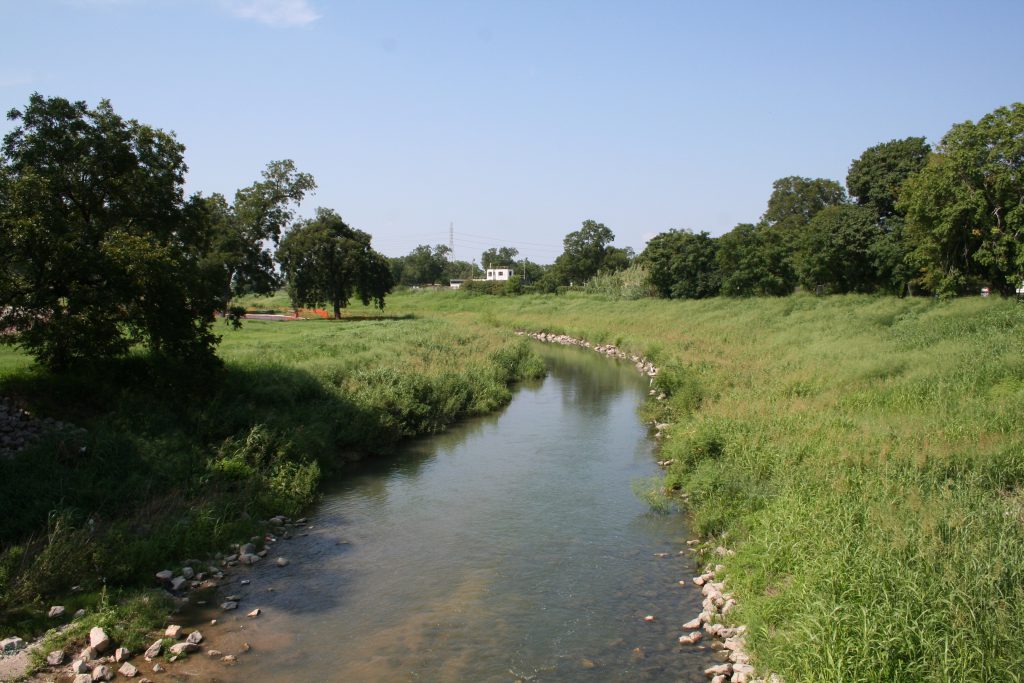
With Congress about to ban earmarks in 2008, the federal funding for the project was about to become extremely difficult to obtain, if not impossible
The Mission Reach ecosystem restoration included about nine miles of river immediately downstream of downtown San Antonio. This was an incredibly complex project requiring engagement with individual citizens and leaders of community, business, and interest groups as well as staff coordination across five local, four state, and five federal agencies along with the elected officials at all those levels of government. Although it was a challenge to keep all these different citizens, groups, agencies, and associated elected officials informed, engaged, and supportive of the project, the real issue, as with most major infrastructure projects, came down to funding.
The Mission Reach was a U.S. Army Corps of Engineers project with the San Antonio River Authority serving as local sponsor and Bexar County providing the majority of the local funding. Fortunately, the local funding was never in doubt as Bexar County Judge Nelson Wolff (similar to a county executive) had taken personal ownership in the success of this project. The difficulty, therefore, was securing the federal funds for this project.
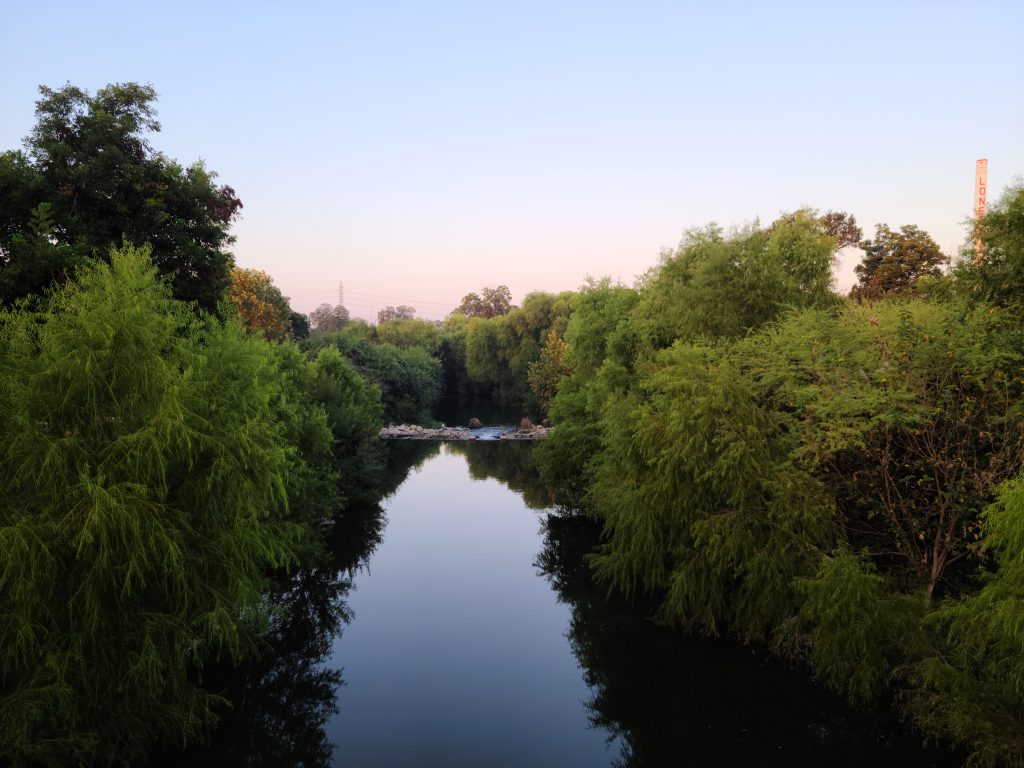
An unorthodox approach was taken to secure federal funding, which was three-fold, and step one began a year before the project officially broke ground in 2008. In 2007 while the project was still in design, the San Antonio River Authority’s general manager, Suzanne Scott, looked for creative solutions, and ultimately, the agency’s elected board of directors agreed with her recommendation to fund in perpetuity the operations and maintenance of the San Antonio River Improvements Project. This agreement freed up the city and county from a long-term annual operations and maintenance funding commitment, and in exchange, they were able to commit more funding to debt service to support the capital construction costs.
Anticipating a federal funding shortfall for the Mission Reach, step two also began in 2007 when Bexar County, with support from the San Antonio River Authority and City of San Antonio, worked to secure the backing of the business community and the citizen’s stakeholder committee to call for a sales tax election. With the full support of the committee and the businesses that would be most impacted by the implementation of a specific sales tax, the county elected officials had the confidence to call for the election.
In May 2008, the second step of the funding process was completed when Bexar County voters approved, by over 70%, a proposition providing $125 million to the river project. This sales tax revenue, combined with additional funds provided by a Bexar County flood tax (property tax), provided all the funding required to construct the ecosystem restoration project.
“With Congress about to ban earmarks in 2008, the federal funding for the project was about to become extremely difficult to obtain, if not impossible.” — Brian Mast
With the entire Mission Reach construction and long-term operations and maintenance funding now identified, the final step was to work with the federal delegation to secure specific authorization language from Congress that would allow the project to proceed, even without the federal funding match.
This was a large mountain to climb, but the effort was successful and language was inserted into the Omnibus Appropriations Act of 2009 that gave permission to assume local control of design and construction on the federal project, the ability to use local funds to advance federal appropriations to carry out the construction of the project, and the Secretary of the Army was directed to reimburse the local funds advanced to complete the project, subject to the availability of future appropriations.
My former colleague Brian Mast, manager of government affairs for the San Antonio River Authority, summed up the significance of this legislative victory when he said, “This authorization language provided a critical path forward as the Mission Reach project had never been included in an administration’s budget, so it was always considered an ‘earmark’ project. With Congress about to ban earmarks in 2008, the federal funding for the project was about to become extremely difficult to obtain, if not impossible.”

Under this new arrangement, the project was completed faster than the Corps’ estimated project delivery schedule, which saved the federal and local governments over $46 million in project costs. And, while Corps staff and federal delegation members said in 2009 that reimbursement was never likely to materialize in future congressional appropriations, through unified local elected, business, and community support, the final federal reimbursement appropriation was received in 2020.
The federal reimbursement funds returned to Bexar County over the years were reallocated to other waterway projects, including the San Pedro Creek Culture Park and Westside Creeks Restoration Project. Mast told me, “Being involved in a project like the Mission Reach that has broad community support makes the government affairs work for it extremely meaningful, rewarding, and enjoyable.”
A final funding lesson is that clear, precise, inclusive, and constant communication is a necessity in getting the funding to complete complex, multi-year ecosystem restoration projects.
I can attest to that sentiment, and add that this broad spectrum of support also made it possible for the project to get funded. An apparent lesson here is that “the best project is the one that gets funded,” as the old public affairs saying goes.
In the case of the San Antonio River Improvements Project, the project was technically sound from an engineering and scientific perspective, and it had strong public support. However, as anyone who has worked around public funding knows, technically sound plans that have public support do not always receive funding, as there are always more plans to fund than public monies available to be allocated.
Therefore, another lesson learned is to use every tool in the funding toolbox to complete these types of projects, and when all the existing tools run out, get creative and find a new tool, even through legislative action if necessary.
A final funding lesson is that clear, precise, inclusive, and constant communication is a necessity in getting the funding to complete complex, multi-year ecosystem restoration projects. While that may be obvious, it is worth repeating during these times of increasing divisiveness.
The project team worked diligently and sought to inclusively bring everyone into the project vision. The project contained social, environmental, and economic benefits, so there was a message that could honestly be delivered to any audience, regardless of their predispositions (perceived or real). Through open, transparent, and thorough communications and collaboration, the project team was able to secure bipartisan support from community members, interest groups, business leaders, and elected officials at various levels of government, thus securing the necessary funding.
This inclusive approach worked well, even during a period of time with escalating hostilities and polarization around potentially hot-button political topics such as congressional and local funding, climate change, ecosystem restoration, and environmental justice. As Anand Giridharadas points out in his book The Persuaders, “When we give up on changing minds, we give up on changing things.” We never gave up on engaging everyone in order to develop the coalition needed to get the project done.
The Mission Reach ecosystem restoration has provided the City of San Antonio an opportunity for an environmental lift in the center of the city. It provides recreational and economic opportunities as well as safety by providing flood mitigation during large storm events
The Mission Reach ecosystem restoration is still in an adolescent phase of re-establishment. It will take up to 50 years for some of the 20,000 trees planted along nine miles of the San Antonio River to reach full maturity. While the restoration is still young, there is ample evidence to show the incredible success of the project, including the 317 native plant species recorded within the project bounds.
The total number of birds counted using the project habitat during an avian study is now close to 74,000, with the total number of bird species recorded at 212. Melissa Bryant, director of technical services for the San Antonio River Authority, said, “The restoration provided for a diversity of bird species including grassland, wetlands, and woodland species. This provided opportunities for a year-round habitat for a variety of bird species that have been observed actively using the Mission Reach including migratory, overwintering, and summer species.”
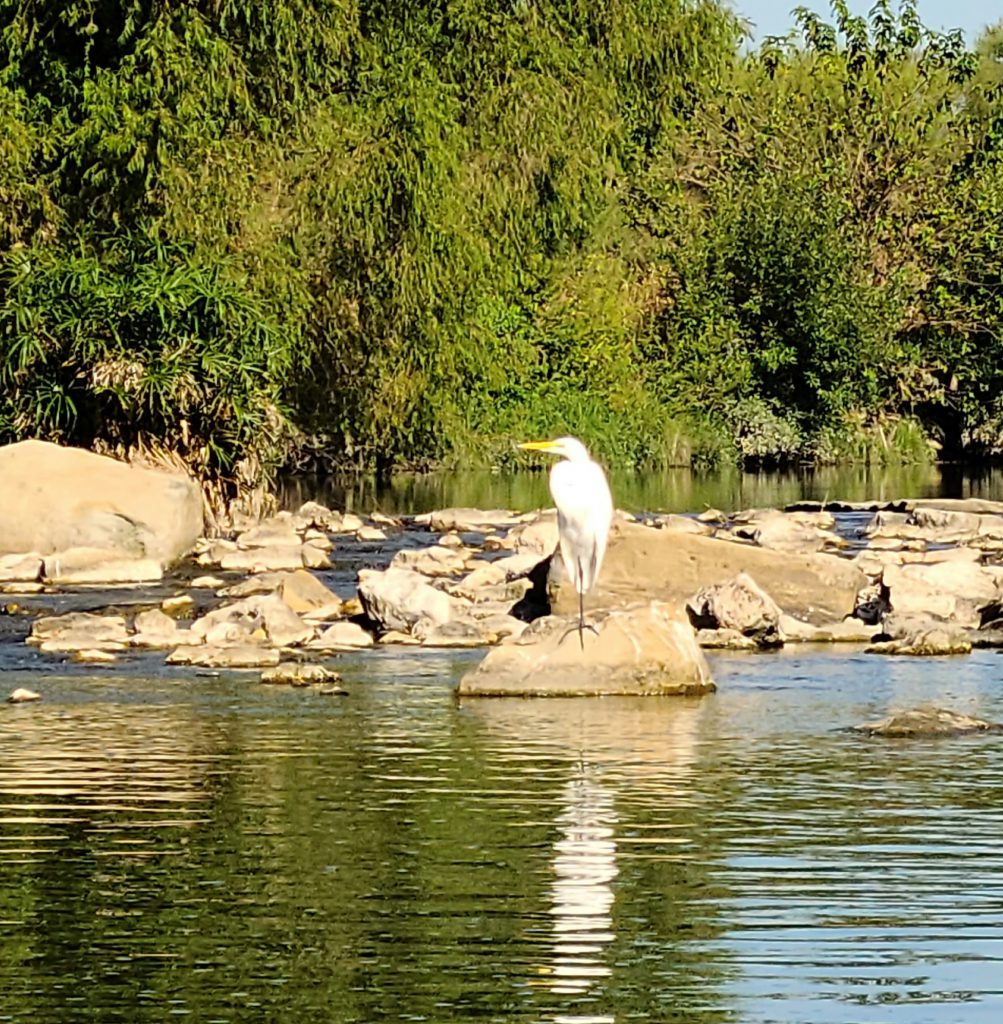
Bryant went on to say, “Overall the fish community has continued to improve and remain stable particularly with the overall species diversity and presence of native species versus non-native species.”
In 2015, 84,000 Guadalupe bass fingerlings were released in various parts of the Mission Reach. In 2017, the San Antonio River Authority began the Mission Reach Mussel Survivability Study with the goal to reintroduce four target species into the Mission Reach in 2023. The San Antonio River Authority began conducting intensive fish surveys in 2019, identifying 21 species, including the Guadalupe bass, demonstrating that this intolerant species that is highly selective of its habitat types was surviving after being reintroduced four years earlier.
The 2021 fish species count increased to 28; 94 percent of those species were native species. Some of the most notable species never before documented in the Mission Reach include the Texas Logperch, Gray Redhorse, and Longnose Gar. Bryant said, “The Texas Logperch is a remarkable discovery given it is considered an intolerant species and needs specific habitat types and good water quality.”
With regards to the water quality, bacteria impairments due to stormwater runoff are common in urban areas around the world, and that is no different for the Mission Reach. Despite this stormwater challenge, the ecosystem restoration is beginning to deliver improvements. According to Bryant, “We still have an impairment for bacteria in most of the Mission Reach; however, the last mile is no longer impaired. We have also seen during ambient conditions the bacteria levels are meeting primary contact recreation standards, but quickly are elevated once the area has a storm event.”
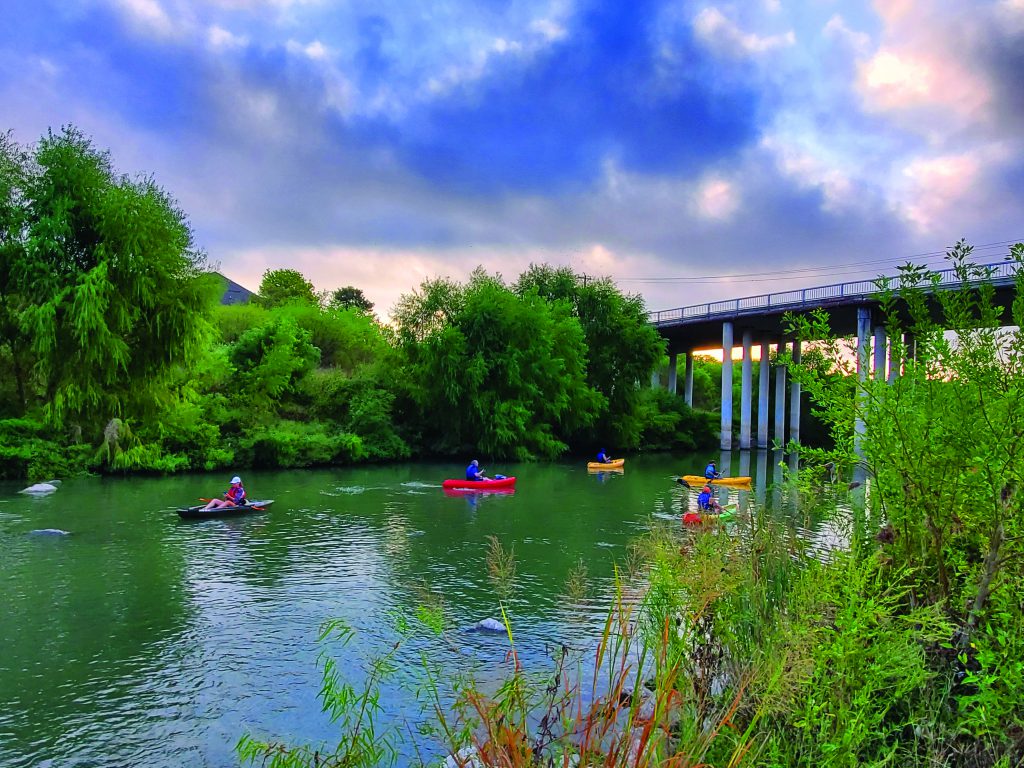
In addition to providing ecological and biological function benefits to the San Antonio River, the ecosystem restoration has also increased recreational use by the local community as well as tourism from all over the world. Hikers, bikers, and kayakers are constantly on the project throughout the week.
The diverse avian population supports the birding community and there has been an increase in recreational fishing on the Mission Reach as well. A recently completed economic study found that the fishing community alone visiting the Mission Reach brought nearly $700,000 to the local economy in 2021. Bryant concluded, “Overall, the Mission Reach ecosystem restoration has provided the City of San Antonio an opportunity for an environmental lift in the center of the city that provides recreational and economic opportunities as well as safety by providing flood mitigation during large storm events.”
That, I believe, is an important lesson from the Mission Reach: it is possible in urban areas to have healthy ecosystems that provide additional social and economic benefits all while still providing necessary flood mitigation. The Mission Reach is demonstrating, along with similar urban ecosystem restoration projects around the world, that flood management and ecosystem preservation are not mutually exclusive propositions, as they once were.
“Overall, the Mission Reach ecosystem restoration has provided the City of San Antonio an opportunity for an environmental lift in the center of the city that provides recreational and economic opportunities as well as safety by providing flood mitigation during large storm events.” — Melissa Bryant
Additionally, the restoration success that has happened along the Mission Reach in less than 10 years since the completion of construction is also demonstrating the incredible resilience of nature. When provided healthy, native habitats, the species we share the planet with can rebound and return to ecosystems that were once, not that long ago, severely degraded.
There will undoubtedly be situations where traditional channelization, hard armoring, and other impervious surfaces will be necessary to provide urban flood protection. However, there is now sufficient, widespread evidence that supports the benefits provided by ecosystem restoration, natural channel design, green infrastructure, and other sustainable engineering practices, which hopefully will give rise to these practices being implemented as the urban planning default rather than the traditional gray infrastructure of the past.
As citizens start to see and understand the difference between green and gray infrastructure, even if they don’t know the terminology, the demand will grow as well. This was the case in San Antonio. Even before the Mission Reach was completed in 2015, the citizen support was such that Bexar County committed to constructing the San Pedro Creek Culture Park, which opened its first phase in 2018 as part of the community’s 300th anniversary and last year completed the second phase of construction.
In support of environmental justice benefits, the federal government in 2021 allocated its full share of funding, over $75 million, to construct 11 miles of ecosystem restoration along tributaries of the San Antonio River. The local match, provided by the county, was already available, thus moving this project forward, and as it is completed and connects to the Mission Reach, there will be over 20 miles of restored ecosystem in the center of the seventh largest city in the U.S. In total, from 1998 to approximately 2030, over $1.2 billion in local and federal funding will be spent along the San Antonio River and its tributaries to restore ecosystems, expand recreational access, and add other amenities, all while maintaining or improving floodwater conveyance.
The Mission Reach has contributed to the efforts of the international relations team at the city to raise awareness about San Antonio on the global stage and shine a spotlight on our unique assets
The success of the Mission Reach has been recognized globally. Over the past decade, I had the privilege of presenting at over a dozen international environmental conferences, and it was my honor to present at the 2017 International Riversymposium in Brisbane, Australia, where I accepted the International Riverprize on behalf of all the partners who worked on this innovative urban ecosystem restoration project.
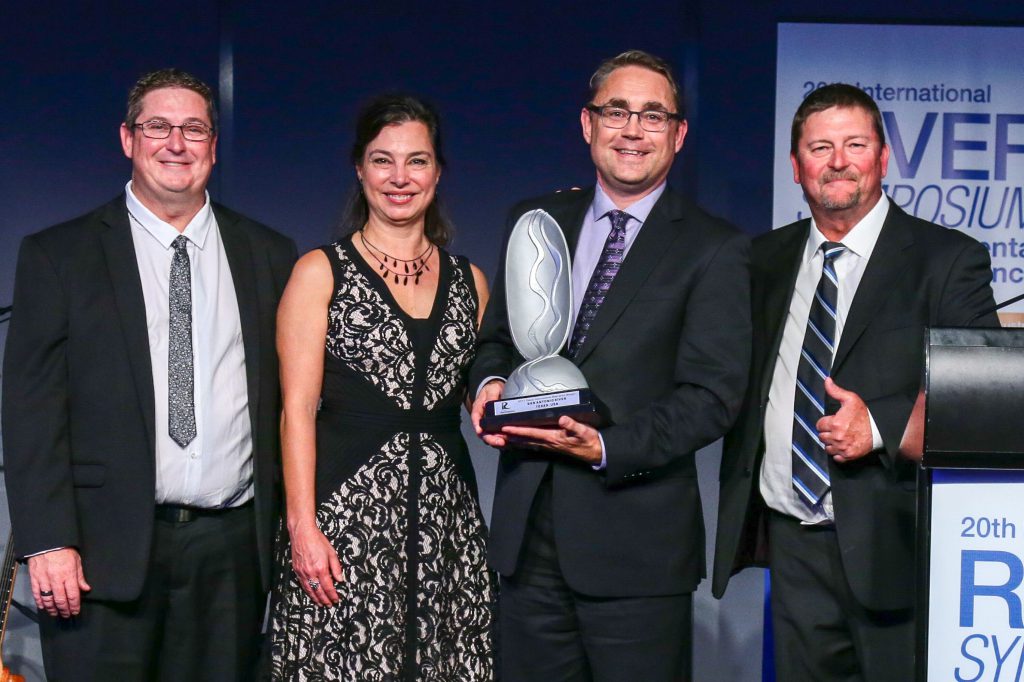
When I asked Shahrzad “Sherry” Dowlatshahi, chief diplomacy and protocol officer for the City of San Antonio’s Global Engagement Office, about the global success of the ecosystem restoration, she told me, “The Mission Reach has contributed to the efforts of the international relations team at the city to raise awareness about San Antonio on the global stage and shine a spotlight on our unique assets.” The ecosystem restoration work was also recognized when UNESCO granted a World Heritage Site designation in 2015 to the San Antonio Missions. Dowlatshahi continued, “At the Global Engagement Office, we often include visits to the historic missions and build in educational tours of the mission portals that connect to the ecosystem restoration along the river and acequia system. It is such an important part of telling the San Antonio story to our international visitors.”

Final thoughts
In writing this piece, I had the chance to reminisce with Suzanne Scott, who was my boss and mentor at the San Antonio River Authority. Prior to the completion of the San Antonio River Improvements Project, local residents had viewed the San Antonio River Walk as place for tourists and not for locals. I asked Scott what she thought the legacy of the project is and she said, “With the completion of the river projects, the value of the river to the residents of the community was transformed and expanded. San Antonians now live, work, and enjoy many destinations along the Museum Reach and the Mission Reach has become the preferred destination for bird watching, paddling, and appreciation of the natural resources of the restored river ecosystem. The legacy of the project is a greater appreciation for the San Antonio River and increasing desire to protect it.”
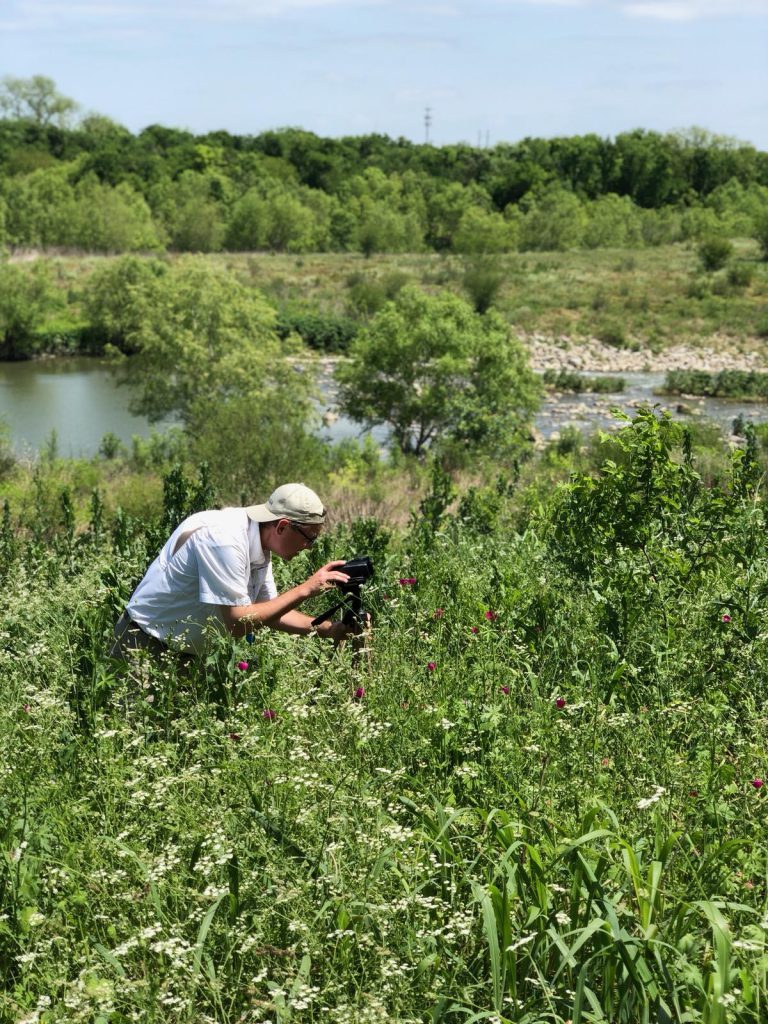
I would add that the San Antonio River Oversight Committee’s diversity and its approach that gave everyone an equal seat and equal voice at the table was critical to the success of the project. I was able to share and build upon these experiences as an invited participant in a 2021 EPA Pilot Project focused on advancing collaborative and inclusive stakeholder engagement in water projects, Integrated Water Resources Management with an Equity Lens. Clearly, more needs to be done to advocate for and help advance environmental justice for all, regardless of race, color, religion, gender, gender identity or expression, sexual orientation, national origin, genetics, disability, age, or economic status.
Not only is advocating for equity the right thing to do, but if systemic inequality is not addressed on the front end of an ecosystem restoration project in a historically disadvantaged urban area, there is ample evidence to suggest that gentrification will occur and negatively impact the citizens who have long lived in that community.
The last lesson learned that I would offer is that from the start, when an ecosystem restoration plan is being developed in a historically disadvantaged urban area, it should be done in tandem with the creation of an equitable development plan to address potential displacement, property tax increases, and other equity-related issues.
Not only is advocating for equity the right thing to do, but if systemic inequality is not addressed on the front end of an ecosystem restoration project in a historically disadvantaged urban area, there is ample evidence to suggest that gentrification will occur and negatively impact the citizens who have long lived in that community; these are the very same underserved citizens that ecosystem restoration projects are often promoted as being built to benefit.
So, while it’s important to provide flood mitigation, ecosystem restoration, water quality improvements, and recreational amenities for lower-income communities to provide area residents with access to all the health and economic benefits that come with having safe places to be outside, it would be best to do this environmental work while concurrently addressing issues such as workforce development, small business enterprises, and affordable housing.
In full transparency, the dual development of an ecosystem restoration plan along with an equitable development plan was not done in association with the Mission Reach and that did result in some controversy. While Mission Reach contains numerous positive lessons learned, this is something I have identified that could have been done better and should be better during future ecosystem restoration projects.
And since I can’t point to the Mission Reach as a great example of equitable development planning, I offer the 11th Street Bridge Park in Washington, D.C., as a good example of this type of coordinated restoration and equitable planning.
Finally, while San Antonio will always have a special place in my heart, I’m grateful my wife and I moved to the Puget Sound area. When we decided to move here, we thought we would find a community that shares our respect for the natural environment, our desire to protect, preserve, and restore natural habitats and green spaces, and our support for social and environmental justice. We have found all of that here, and more.
Balancing people, planet, and profit in a just and equitable way takes hard work. I see examples of this hard work happening in and around the Puget Sound as I learn more about the wonderful habitat and fish passage restoration work taking place throughout the area. I look forward to engaging with you in this difficult but rewarding work as my wife and I continue settling into our new community, here in the beautiful Puget Sound region.
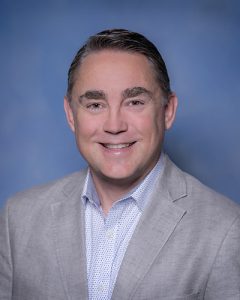
About the author: Steven Schauer
From kayaking the San Antonio River in Texas to slow boat rides on the Grand Canal in China; from walking the Royal Mile in Edinburgh to whale watching off the coast of Brisbane; to the halls of power at the U.S. Capitol to peaceful Buddhist temples in South Korea and Japan; Steven’s world travels have taught him that storytelling is the unifying essence of the human experience. Steven has over 20 years of public service and external communications experience, including extensive work in the areas of ecosystem restoration and sustainability. He has shared this knowledge by participating on panels and serving as a keynote speaker at various environmental-related conferences around the world and on national programs such as the History Channel’s Life After People and Samantha Brown’s Places to Love. Being pulled by the forests, trails, and rivers of the Cascade Range and Olympic Mountains as well as the Puget Sound and Pacific Ocean, Steven and his wife, Ashley, purposefully and mindfully decided to leave successful professional careers in San Antonio to start the second half of their lives in the Pacific Northwest. Steven now resides in Seattle with his wife and their dog and cat, and he is continuing to find ways to improve the environmental, social, and economic conditions of the world.

